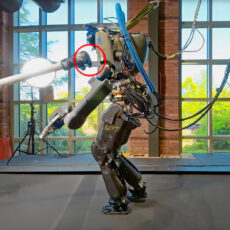
Photo credit: Boost Treadmills LLC
Running can feel like wrestling gravity itself, every stride a gritty deal with the ground, especially if you’re nursing an injury or fighting mobility woes. The Boost 2 microgravity treadmill laughs in the face of physics, letting you jog with just a sliver of your body weight, and it’s no mere gym toy—it’s a straight-up NASA brainchild, cooked up to keep astronauts fit in the weightless expanse of space.
Back in the day, NASA’s Robert Whalen at Silicon Valley’s Ames Research Center was puzzling over how to stop astronauts’ muscles and bones from turning to mush in microgravity. His fix? A treadmill using air pressure to fake Earth’s tug, pinning runners down. Then, in a lightbulb moment, Whalen flipped it—wrap the lower body in a pressurized bubble, and you could slash a runner’s effective weight, making them feel like they’re floating. “I built a prototype in my garage,” Whalen recalled, “thinking it could help patients rehabilitate.” That scrappy 1980s and ’90s rig, pieced together at home, sparked a fitness game-changer.
- 【Versatile Fitness Solution】: This multifunctional treadmill combines walking, under desk running, and vibration modes, allowing you to enjoy a...
- 【Powerful Yet Quiet Performance】: With a 2.5HP servo motor, this treadmill delivers speeds from 0.2 to 3.8 mph and supports up to 350...
- 【Intuitive Fitness Tracking】: The LED display and Sperax Fitness app provide real-time monitoring of essential metrics like calories burned,...
By 2005, Whalen’s son, Sean, teamed up with Tom Allen to turn that garage hack into AlterG, a company that made antigravity treadmills a darling of pro athletes and therapists, “unweighting” runners by up to 80% using air pressure. But those machines cost a fortune—tens of thousands—locking them away in elite gyms and clinics. In 2017, Sean Whalen, Allen, and ex-AlterG pal Jimmy Bean launched Boost Treadmills to bring this tech to the masses. “We knew we could improve the machines, but ultimately, it’s a price thing,” Allen said. “Could we make something for homes or the VA that could also be successful?”
The Boost 2, which dropped in 2022, is their big swing—quieter, leaner on power, and priced at about a third of its predecessors, close enough for serious home gym rats to justify. It works by sealing your lower half in an inflatable chamber, zipped up at the waist, with air pumping in to lift you, easing the pounding on joints and muscles. It’s like jogging on the moon, but in your den. For folks battling knee injuries, arthritis, or stroke recovery, it’s a lifeline, turning couch time into motion. “You give them the ability to take some weight off and reduce the pain,” Sean Whalen explained, “and all of a sudden, you’ve opened up a whole new world.”
Boost slashed costs by trimming the fat off the design while keeping the core tech rock-solid, and it’s paying off—sales to regular folks have tripled since the Boost 2 hit. Even Jeremy Renner, who shattered 38 bones in a 2023 snowplow crash, gave it props for getting him back on his feet, proving its real-deal impact. For veterans or those wrestling obesity, it’s a gentle way to stay active daily, crucial for keeping mobile long-term.
[Source]







